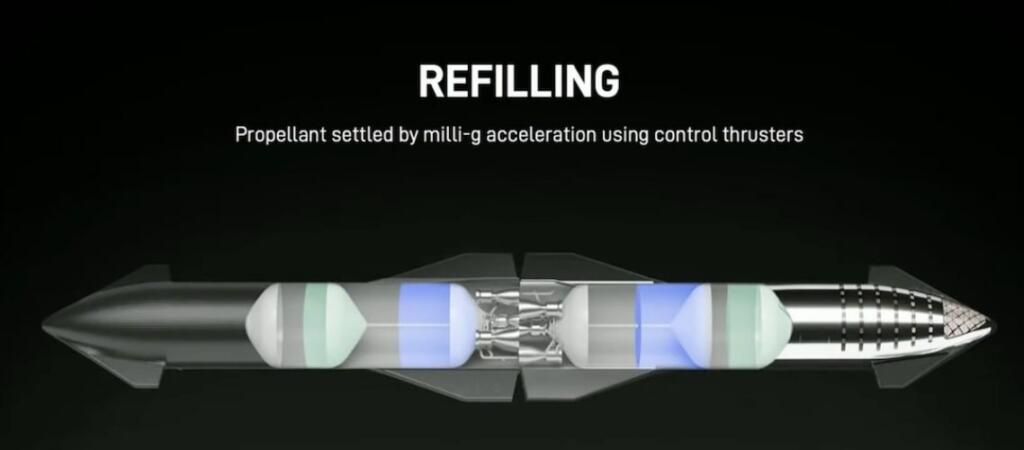Lakiesha Hawkins, deputy associate administrator for NASA’s Moon to Mars program office, one of her slides (at a Congressional Committee presentation) said SpaceX is moving quickly toward the third Super Heavy/Starship launch and that this flight will include a propellant transfer demonstration.
Cutaway diagram was by Tom Dixon
SpaceX Has a $52 million cryogenic fluid management NASA Tipping point award.
This test would involve transferring super-cold propellant from one tank to another inside a Starship spacecraft. It’s a precursor to future, more complex demonstrations involving two giant Starships docked together in Earth orbit. Then SpaceX will be ready to send a Starship toward the Moon for a test landing without astronauts onboard.
The demonstration will include technology risk assessment, design and prototype testing, and in-orbit demonstration. It will also provide insights for larger vehicle-to-vehicle transfers, which is a key capability for SpaceX’s lunar lander.
This is a critical capability to enable the landing on the moon with SpaceX Lunar Starship.



Brian Wang is a Futurist Thought Leader and a popular Science blogger with 1 million readers per month. His blog Nextbigfuture.com is ranked #1 Science News Blog. It covers many disruptive technology and trends including Space, Robotics, Artificial Intelligence, Medicine, Anti-aging Biotechnology, and Nanotechnology.
Known for identifying cutting edge technologies, he is currently a Co-Founder of a startup and fundraiser for high potential early-stage companies. He is the Head of Research for Allocations for deep technology investments and an Angel Investor at Space Angels.
A frequent speaker at corporations, he has been a TEDx speaker, a Singularity University speaker and guest at numerous interviews for radio and podcasts. He is open to public speaking and advising engagements.


Hey Brian, I’d appreciate you crediting my work next time you use it. I the creator of the cutaway diagram.
Tom Dixon
[ some mention it, some not
‘https://pbs.twimg.com/media/FcVw7M3XoAIgBmJ.jpg’ ]
[ maybe it’s interesting adding Space Shuttle diagram for comparison, also
‘https://cdn.britannica.com/93/70093-050-AA168D21/space-shuttle-orbiter-liquid-propellant-tank-rocket-boosters.jpg’ ]
Sorry for missing the credit. I added it.
I just don’t see transferring propellant from one tank to another will be very hard. I spoke with an engineer at ULA who was probably the leading expert on orbital depots. All aspects of cryogenic transfer and storage have been demonstrated whether in the lab or in orbit. He stated that, all that remains is to just demonstrate it in orbit and it would probably work the first time. I suspect that SpaceX will have demonstrated propellant transfer from tanker to insulated depot in LEO before the end of 2024. With MLI and cryocoolers, cryogens can be stored indefinitely.
I suppose that doesn’t actually require them to make orbit, depending on how long the test takes. Even with the originally planned barely suborbital hop, they’ll be in zero g for a significant period.
But if they’re carrying extra fuel to pull this off, why not make orbit, so they can do a real reentry test, too?
I was thinking based on the the Starship RUD the last time, that that sort of suborbital trajectory is the most conservative for quick re-entry of debris until they have greater confidence it will make it to a stable orbit.
Exactly correct.
One could reach low LEO and any debris wouldn’t stay up for very long. Rather, the concern is from pieces of debris that would reach the ground.
This is exactly why I wish they would do this testing with F9’s instead of starship, esp when doing it between 2 ships. Anything goes wrong, you want mass as small as possible and in sub-orbit.